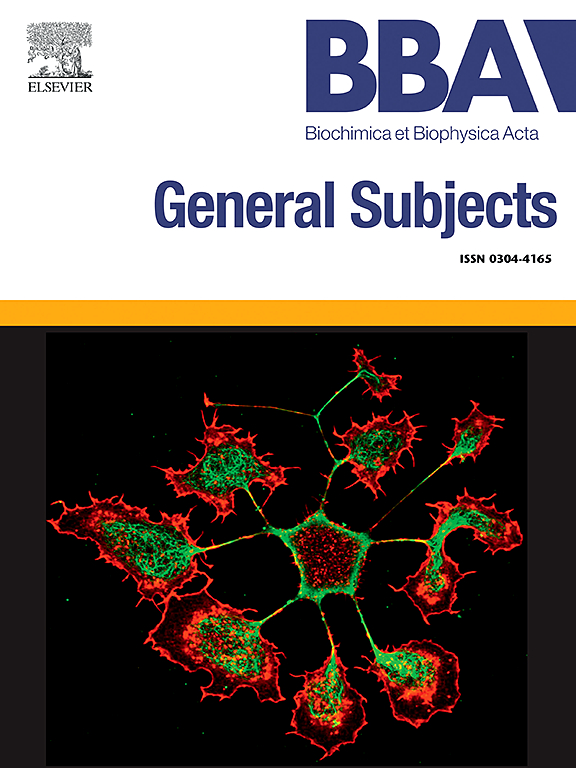Evaluation of stabilizing additives to protect activities of cytochrome P450 enzymes for in vitro drug testing and pharmacogenetic studies: Focus on CYP2D6
IF 2.2
3区 生物学
Q3 BIOCHEMISTRY & MOLECULAR BIOLOGY
Biochimica et biophysica acta. General subjects
Pub Date : 2025-01-26
DOI:10.1016/j.bbagen.2025.130770
引用次数: 0
Abstract
In vitro and ex vivo studies on drug metabolism and stability are vital for drug development and pre-clinical safety assessment. Traditional in vitro models, such as liver enzyme (S9) fractions and microsomes, often fail to account for individual variability. Personalized models, including 3D cell models and organoids, offer promising alternatives but may not fully replicate physiological processes, especially for Cytochrome P450 (CYP) families involved in extrahepatic metabolism. A major challenge in these studies is the low stability and expression of CYP enzymes.
This study aimed to stabilize native CYP activity in vitro by developing an optimized buffer formulation. Initial experiments using recombinant CYP supersomes and liver microsomes identified 45 μM cysteine, 4 mM dithiothreitol (DTT), and 300 μM phosphocholine (PC) as the most effective stabilizers. The applicability of these stabilizers was subsequently confirmed in primary human brain tissue, where they enabled the successful determination of CYP2D6 activity. This highlights the stabilizing buffer's utility for enhancing CYP functionality in diverse tissue types, including the brain, which plays a critical role in cerebral detoxification and drug metabolism.
These findings suggest that specific enzyme stabilization can enable comprehensive evaluations of CYP function in ex vivo tissue samples, advancing the development of organoid human tissue models and supporting drug metabolism research.
体外药物试验和药理学研究中细胞色素P450酶活性稳定添加剂的评价:以CYP2D6为重点
体外和离体药物代谢和稳定性研究对药物开发和临床前安全性评估至关重要。传统的体外模型,如肝酶(S9)分数和微粒体,往往不能解释个体差异。个性化模型,包括3D细胞模型和类器官,提供了有希望的替代方案,但可能无法完全复制生理过程,特别是参与肝外代谢的细胞色素P450 (CYP)家族。这些研究的主要挑战是CYP酶的低稳定性和低表达。本研究旨在通过开发优化的缓冲配方来稳定天然CYP的体外活性。利用重组CYP超体和肝微粒体进行初步实验,发现45 μM半胱氨酸、4 mM二硫苏糖醇(DTT)和300 μM磷脂胆碱(PC)是最有效的稳定剂。这些稳定剂的适用性随后在原发性人脑组织中得到证实,在那里它们能够成功地测定CYP2D6的活性。这突出了稳定缓冲液在多种组织类型中增强CYP功能的效用,包括大脑,它在大脑解毒和药物代谢中起着关键作用。这些发现表明,特异性酶稳定可以全面评估体外组织样品中CYP的功能,促进类器官人体组织模型的开发,并支持药物代谢研究。
本文章由计算机程序翻译,如有差异,请以英文原文为准。
求助全文
约1分钟内获得全文
求助全文
来源期刊

Biochimica et biophysica acta. General subjects
生物-生化与分子生物学
CiteScore
6.40
自引率
0.00%
发文量
139
审稿时长
30 days
期刊介绍:
BBA General Subjects accepts for submission either original, hypothesis-driven studies or reviews covering subjects in biochemistry and biophysics that are considered to have general interest for a wide audience. Manuscripts with interdisciplinary approaches are especially encouraged.
 求助内容:
求助内容: 应助结果提醒方式:
应助结果提醒方式:


